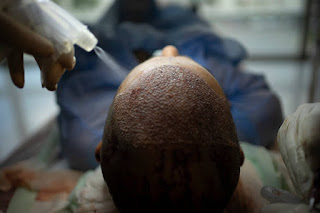Hair Transplants for Women
Hair Transplants for Women: Addressing Female Hair Loss:
While hair loss is often associated with men, it is a prevalent concern for many women as well. Female pattern hair loss, hormonal changes, and other factors can contribute to thinning hair or bald patches in women. Hair transplants have emerged as a viable solution for women seeking to restore their natural hair density and regain confidence. In this guide, we'll explore the considerations, procedures, and outcomes of hair transplants for women.
Understanding Female Hair Loss:
Hair loss in women can be attributed to various factors, including:
Genetics (Female Pattern Baldness): Similar to men, women can experience genetic hair loss, known as female pattern baldness. This often results in diffuse thinning over the crown.
Hormonal Changes: Hormonal fluctuations due to pregnancy, childbirth, menopause, or conditions like polycystic ovary syndrome (PCOS) can contribute to hair loss.
Medical Conditions: Certain medical conditions, such as thyroid disorders or autoimmune diseases, can lead to hair loss in women.
Stress and Diet: Emotional stress, crash diets, and nutritional deficiencies can impact hair health and contribute to hair loss.
Hair Transplant Considerations for Women:
Type of Hair Loss: Hair transplants are most effective for women with stable, non-progressive hair loss. It's crucial to identify the underlying cause of hair loss before considering a transplant.
Donor Hair Availability: The availability of healthy donor hair is a key consideration. In female pattern baldness, the sides and back of the scalp typically serve as the donor area.
Expectations: Realistic expectations are essential. While hair transplants can provide significant improvements, they may not fully restore hair to its original density. The goal is to achieve a natural and harmonious appearance.
Consultation with a Specialist: Before deciding on a hair transplant, women should undergo a thorough consultation with a qualified hair transplant specialist. The surgeon will assess the extent of hair loss, donor hair quality, and overall candidacy for the procedure.
Follicular Unit Transplantation (FUT): FUT involves harvesting a strip of scalp from the donor area, dissecting it into individual follicular units, and transplanting them to the recipient area. While effective, FUT leaves a linear scar, which may be a consideration for women who prefer shorter hairstyles.
Follicular Unit Extraction (FUE): FUE is a minimally invasive technique where individual follicles are extracted directly from the donor area using a tiny punch tool. This method is preferred by many women as it leaves minimal scarring and allows for flexibility in hairstyle choice.
Artistic Hairline Design: A crucial aspect of hair transplants for women is the design of a natural and aesthetically pleasing hairline. Surgeons consider factors such as facial features, hair density, and age to create a customized and age-appropriate hairline.
Recovery and Results:
Recovery Time: The initial recovery period is relatively short, with most women able to resume normal activities within a few days. Redness, swelling, and scabbing in the recipient area are common but typically subside within a week.
Hair Growth Timeline: New hair growth usually begins within a few months, and noticeable improvements become more apparent over the following months. Full results can be expected within a year.
Post-Operative Care: Following post-operative care instructions, including prescribed medications and avoiding strenuous activities, is crucial for optimal results.
Conclusion:
Hair transplants can be a transformative solution for women experiencing hair loss, providing a natural and long-lasting remedy. However, it's essential for women to undergo a comprehensive evaluation and consultation with a qualified hair transplant specialist to determine candidacy and set realistic expectations. With advancements in techniques like FUE and meticulous artistic design, hair transplants offer a viable path to restoring hair and confidence for women dealing with the impact of hair loss.




Comments
Post a Comment